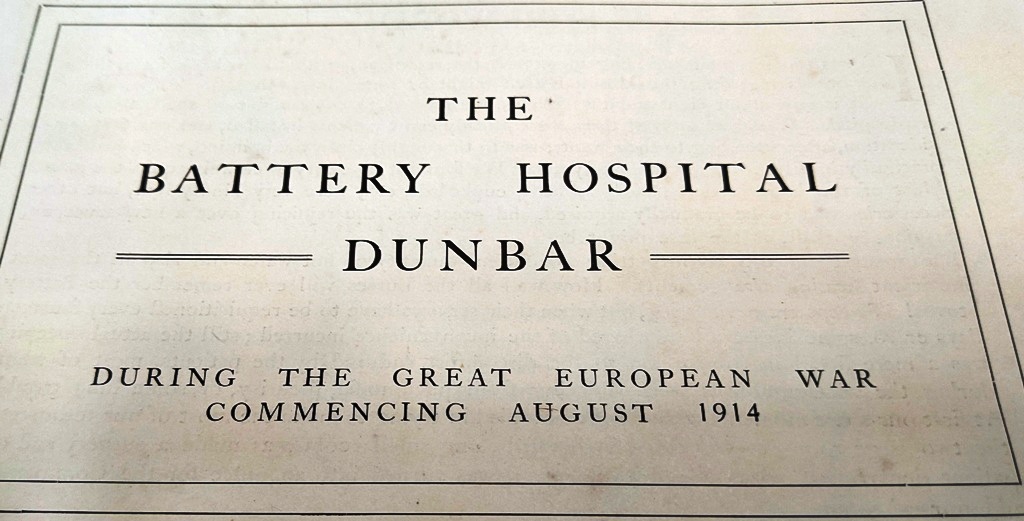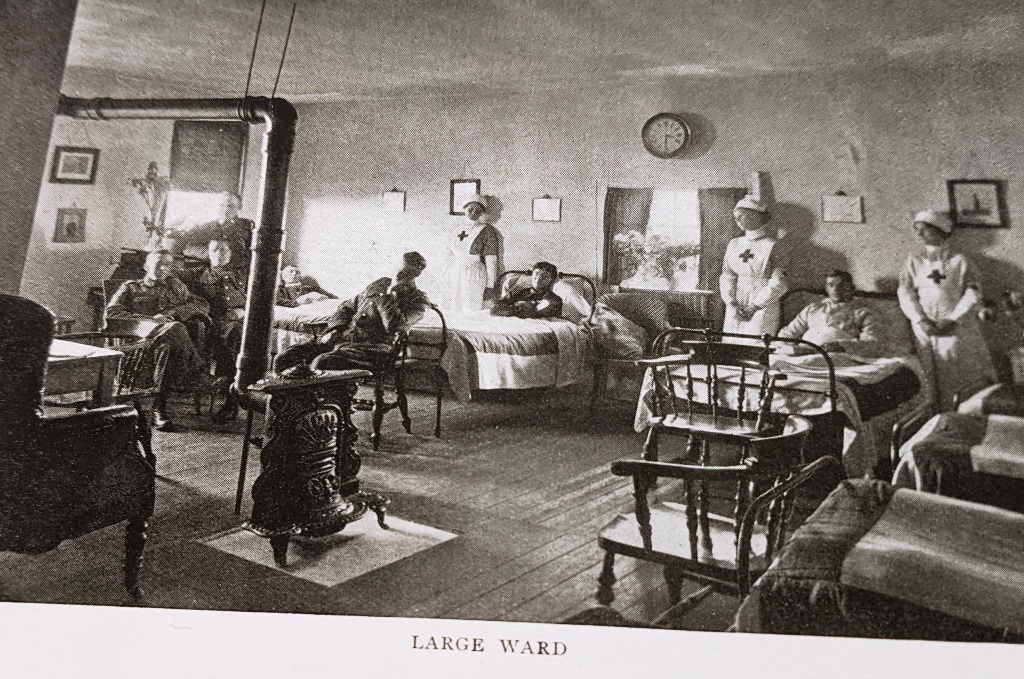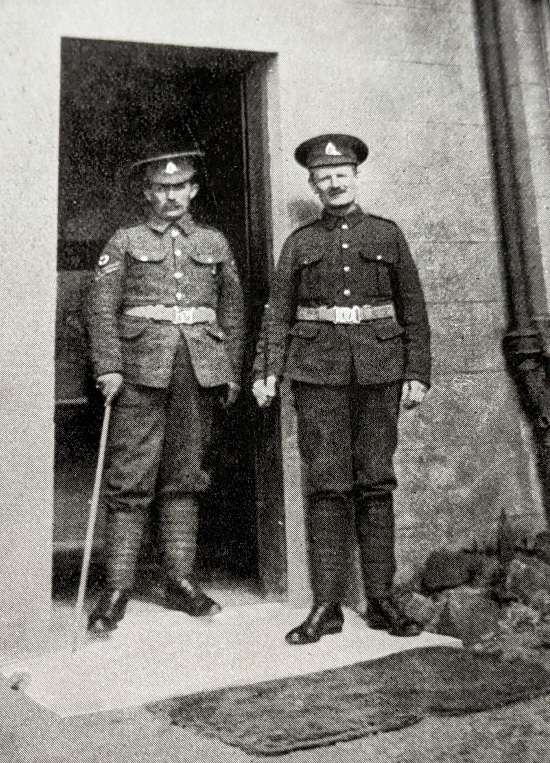This month continues our look at Dunbar Battery Hospital and focuses mainly on the hospital during World War One.

Above is the front cover of a booklet about the hospital in WW1. The publication was produced by the Haddington Voluntary Aid Detachment. VADs as they were known, were “Made up of men and women, and the VADs carried out a range of voluntary positions including nursing, transport duties, and the organisation of rest stations, working parties and auxiliary hospitals”. You can read more about VADs in WW1 here. In the foreword to the booklet, published in 1915, we are told that the VAD were asked to “turn the Battery into a hospital” 8 months previously, presumably some time in 1914. There were 8 patients when the VAD arrived and one of their first tasks was to “thoroughly clean the building, which had been practically in disuse for a number of years”.
The photo above is of two RAMC orderlies attached to the hospital. RAMC stands for Royal Army Medical Core whose main ask was to help soldiers wounded at the front, but also to support hospitals such as the one at the Battery. Dunbar Town Council agreed in June 1915 to “an application of Mrs Anderson of Bourhouse to the Chamberlain that the borough allow a new heating system to be fed into the Battery Hospital without expense to the burgh”. Alice H N Anderson – the Commandant of the VAD at the hospital – had written to the Council stating that a new boiler was needed in the kitchen and a new water cylinder to supply the water. Mrs Anderson added that what was also needed was “To put an open fireplace into each of the wards, building chimneys for them, in place of the old stoves which constantly smoke and won’t burn at all in an East wind”. The letter ended by stating that money was being collected for the improvements and that “after the War it [the improvements] may prove a benefit to the place. This is our great desire. Believe me.”

The photo above is also from the booklet and shows the larger of the two wards. By this time, Mrs Anderson’s fires and chimneys had been installed. The enlarged photo shows the nurses standing by the beds of wounded soldiers as well as others – perhaps RAMC or convalescing patients – in what looks like a scrupulously clean ward. The booklet noted that by 1915 “Our full complement of beds is fourteen and very few weeks have passed without at some time seeing most of them occupied….. Within the last seven months, over one hundred and seventy patients have been treated and passed out of Hospital. As to out-patients, ten thousand is well below the mark”. This would suggest that the hospital was also catering for the local population as well as the soldiers. In 1919, the Battery Hospital was opened as a Cottage Hospital, with the Council giving the building free of rent. On 18 July 1919, The Haddingtonshire Courier reported “In presence of a large and representative gathering, the Battery Hospital was on Wednesday afternoon opened as a Cottage Hospital for Dunbar and district”. The vice-president of the hospital Major Carey stated that the VAD no longer needed the hospital but locally, “a much felt want would be supplied if the hospital could be run as a cottage hospital”. All the equipment was given over by the VAD and Red Cross Society. “The opening ceremony was simple and impressive” with a hymn of dedication, the Courier reported. The hospital was then formally opened by the Dowager Duchess of Roxburghe. In the hospital, one bed was dedicated “to the memory of Sister Violet Fraser who for three years carried out the duties of sister in the auxiliary hospital” before going to Serbia where she died.


You must be logged in to post a comment.